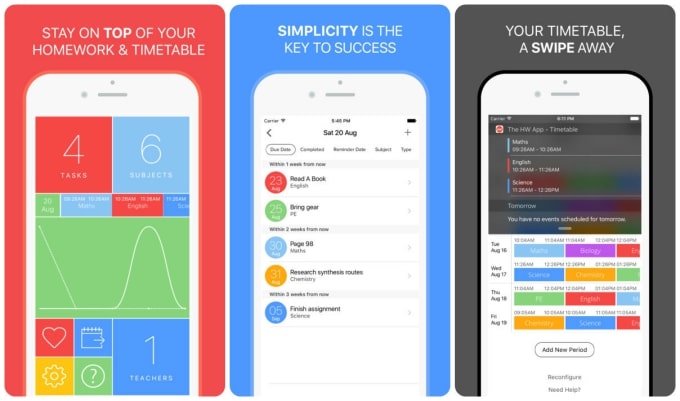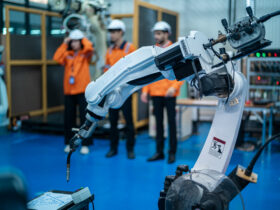Today, smart mobility solutions are transforming the way seniors maintain their independence and quality of life. As aging brings new physical challenges, staying active and mobile becomes more than just a convenience. It is a basis for self-reliance and confidence.
From thoughtfully designed wheelchairs and scooters to replacement batteries that extend device usability, modern mobility aids open doors for older adults to continue living on their own terms.
The journey toward independence often starts with knowing how technology and design can support aging bodies. Mobility devices no longer simply assist with movement; they actively contribute to comfort, safety, and ease.
Seniors who adopt these innovations gain a renewed sense of freedom, allowing them to interact with their surroundings and loved ones without constant dependence on others.
The Changing Outlook on Senior Mobility
Mobility solutions for seniors have progressed far beyond traditional walkers or manual wheelchairs. Electric scooters and power wheelchairs bring a new level of convenience, offering smooth rides with minimal effort. These devices can adapt to a range of environments, indoors or outdoors, granting access to parks, stores, and community centers.
Electric scooters have grown in popularity due to their user-friendly controls and compact design. Many models fold or disassemble easily, simplifying transport and storage. These features give seniors the option to participate in activities that might otherwise feel out of reach. Plus, wheelchairs are designed for comfort to reduce strain during long periods of use.
One of the overlooked aspects of these devices is their energy source. Replacement batteries play a big part in keeping scooters and wheelchairs running reliably. Without effective power management and readily available battery options, seniors could face unexpected immobilization and frustration. Thankfully, today’s batteries are lighter, charge faster, and last longer than ever before.
How Mobility Aids Impact Daily Life
Maintaining independence through smart mobility solutions influences much more than physical movement. It touches emotional well-being, social connections, and mental health. Seniors who can move about on their own tend to experience higher levels of self-esteem and reduced feelings of isolation.
For example, access to a reliable scooter or wheelchair can turn a simple grocery run into an opportunity for social engagement. Conversations at the store or visits to friends and family become more frequent and less stressful. The ability to get outdoors also supports physical fitness, which is important for overall health and slowing age-related decline.
Using mobility aids also decreases the risk of falls, one of the most common and dangerous problems seniors face. Devices designed with stability and user control in mind help older adults avoid accidents, protecting their independence longer. This safety aspect often brings peace of mind to family members and caregivers.

Selecting the Right Device
Choosing the best mobility aid depends on the individual’s lifestyle, environment, and physical needs. For some, lightweight manual wheelchairs with easy-to-use brakes and adjustable seats may be great for mostly indoor use. Others might prefer electric scooters that cover longer distances with greater ease.
Wheelchairs come in different forms, including transport models for assistance by caregivers and power wheelchairs that offer joystick controls for independent operation. Selecting a device involves evaluating the terrain it will be used on, the user’s strength and dexterity, and personal comfort preferences.
Replacement batteries should also be considered early in the decision process. Batteries differ widely in lifespan, charging time, and compatibility. Some seniors benefit from battery packs that can be quickly swapped, allowing them to extend outings without worrying about power loss.
Maintenance and Longevity of Mobility Devices
Smart mobility solutions require regular care to remain dependable. Cleaning, lubrication, and battery care are simple steps that prolong the life of scooters and wheelchairs. Since many seniors rely heavily on these devices, any malfunction can greatly disrupt daily routines.
Replacement batteries must be sourced from trusted providers who offer compatible options. Using low-quality or incorrect batteries can damage devices or reduce performance. Establishing a maintenance schedule helps keep devices in top condition and catches minor issues before they escalate.
Many mobility devices include diagnostic features to alert users when service is needed. Staying aware of these warnings prevents unexpected breakdowns and increases overall safety. Taking time to learn device operation and upkeep helps seniors remain in control.
Innovations Shaping the Future
The field of mobility technology continues to advance rapidly. Beyond traditional wheelchairs and scooters, new smart mobility solutions use sensors, GPS, and health monitoring features. These assist with movement but also track vital signs or send alerts during emergencies.
Some devices are developing adaptive controls that adjust based on the user’s physical condition or environment. For instance, variable speed settings and terrain responses allow safer travel on hills or uneven surfaces. Voice commands and smartphone connectivity add convenience and accessibility.
Batteries are also advancing with solid-state technology promising longer life and shorter recharge times. Wireless charging and solar-powered options are being explored to reduce dependence on traditional electrical outlets.
Community and Support Networks
Independence through mobility is often strengthened by community connections. Many senior centers and local organizations offer programs that introduce and train individuals on the latest smart mobility solutions. Peer groups help new users share experiences and tips, easing the transition to assistive devices.
Families and caregivers matter as well. Encouraging seniors to explore and invest in mobility aids sends a message of respect and support. Collaborating on device choice and maintenance creates a shared responsibility that benefits everyone involved.
The Emotional Impact of Staying Mobile
Beyond the practical advantages, mobility solutions influence the emotional state of seniors. The ability to move freely promotes a sense of dignity and empowerment. Aging does not have to mean giving up hobbies, friendships, or spontaneity.
Many seniors describe the moment they receive a new mobility device as life changing. Suddenly, activities that once seemed impossible are accessible again. This return to autonomy often results in increased happiness and motivation.
Remaining active also combats the cognitive decline associated with inactivity and social isolation. Mobility solutions encourage seniors to interact with their environment and maintain mental sharpness through interaction and exploration.
Customizing Mobility to Individual Needs
Each senior’s journey with mobility is unique. Some may need minimal assistance, while others require complete support. The selection of wheelchairs, scooters, and replacement batteries on the market reflects this diversity.
Customizable options allow seniors to adapt devices to fit their preferences. Adjustable seats, armrests, and controls cater to comfort. Some scooters include storage compartments, cup holders, or lights for evening outings.
Choosing a device that fits daily routines and physical capabilities increases the likelihood it will be used regularly. Practical design combined with thoughtful features creates a solution that respects independence without compromising safety.
Overcoming Barriers to Mobility
Physical challenges are not the only obstacles to mobility. Many seniors face psychological or financial barriers when considering mobility aids. Fear of stigma or reluctance to accept help can delay adoption.
Education about the benefits of smart mobility solutions helps change perceptions. Highlighting stories of seniors who regained independence through these devices encourages others to explore options. Financing programs and insurance coverage also make devices more accessible.
Removing these barriers leads to improved quality of life for many seniors who might otherwise remain homebound. Accessibility is about more than physical devices; it involves opening minds and hearts.
Lifelong Independence Through Smart Mobility
Living independently is a goal shared by many older adults. Smart mobility solutions offer a path to reach that goal by tackling mobility challenges with dignity and innovation. Wheelchairs, scooters, and well-chosen replacement batteries form the foundation of this freedom.
As technology continues to evolve, seniors can expect even greater ease and flexibility in managing their mobility. By embracing these advances, aging individuals find renewed opportunities to participate in their communities, enjoy daily activities, and live life on their own terms.
Moving Forward with Confidence: The Relationship Between Mobility Solutions and Senior Independence
The ability to remain independent is a powerful force in the lives of seniors. With thoughtful adoption of smart mobility solutions, they can reclaim control over their movements and choices.
The combination of modern wheelchairs, scooters, and quality replacement batteries creates a future where aging does not mean surrendering freedom. Mobility becomes a bridge, not a barrier, allowing older adults to stay connected, active, and engaged every day.













Smart mobility solutions are amazing for seniors! Just like tech helps independence, optimizing websites with proper image compression matters too.